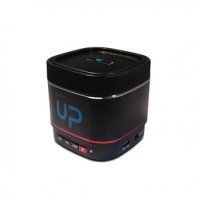Tangara is a portable music player. It outputs high-quality sound through a 3.5 mm headphone jack or Bluetooth, has great battery life, and includes a processor that’s powerful enough to support any audio format you can throw at it. It’s also 100% open hardware running open-source software, which makes it easy to customize, repair, and upgrade. Tangara plays what you want to hear, however you want to hear it.
- Listen to music, audio books, and podcasts on a purpose-built device with a tried-and-true form factor, a familiar user interface, and no interest in your data. Or tear it apart and put it back together again. By tweaking our current firmware, you can experiment with alternative user-interface patterns, new types of content, tracker-based music production, alarm-clock applications, and much more. Or you can design a new faceplate with a different kind of display panel, more physical buttons, speakers, different jacks, or…a custom cherry-wood enclosure? Whatever turns your touchwheel.
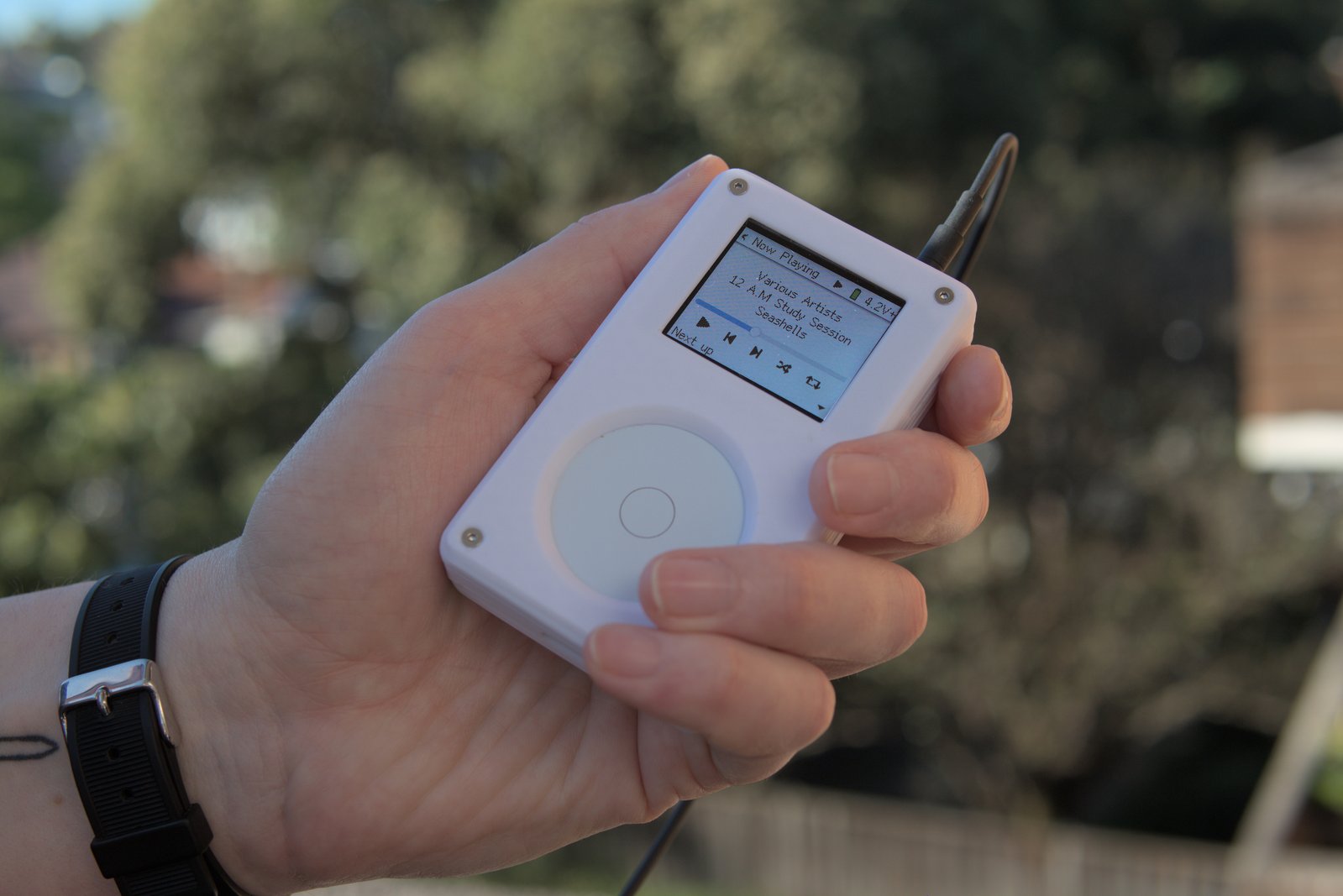
This is great DIY platform for non-audio applications, as well. For example, the ESP32 module at its core is popular among those who enjoy exploring and learning about Wi-Fi and Bluetooth connections. Unlike most such platforms, however, Tangara also gives you a full-colour display, a battery, and a one-finger touch interface to work with.
High-Quality Audio With Modern Affordances
Tangara is first and foremost an audio player, and its features reflect that.
- For wired headphone output, we’ve chosen a Cirrus Logic WM8523 DAC and a TI INA1620 amplifier, which produce really great sound. We think that Tangara’s audio quality is good enough to please casual listeners and audiophiles alike. The sound is clean, and our amplifier can provide enough power that even fairly demanding headphones should have no trouble reaching a comfortable volume.
- For people who prefer wireless listening, Tangara also has basic Bluetooth SBC audio support, with more modern codecs possible via future firmware updates.
- Tangara’s display is cheap and cheerful. As a 1.8" TFT screen with a 160x128 resolution and 18-bit colour, it’s a very basic screen, but it looks pretty good and uses very little power. And the ST775R driver is extremely easy to develop with.
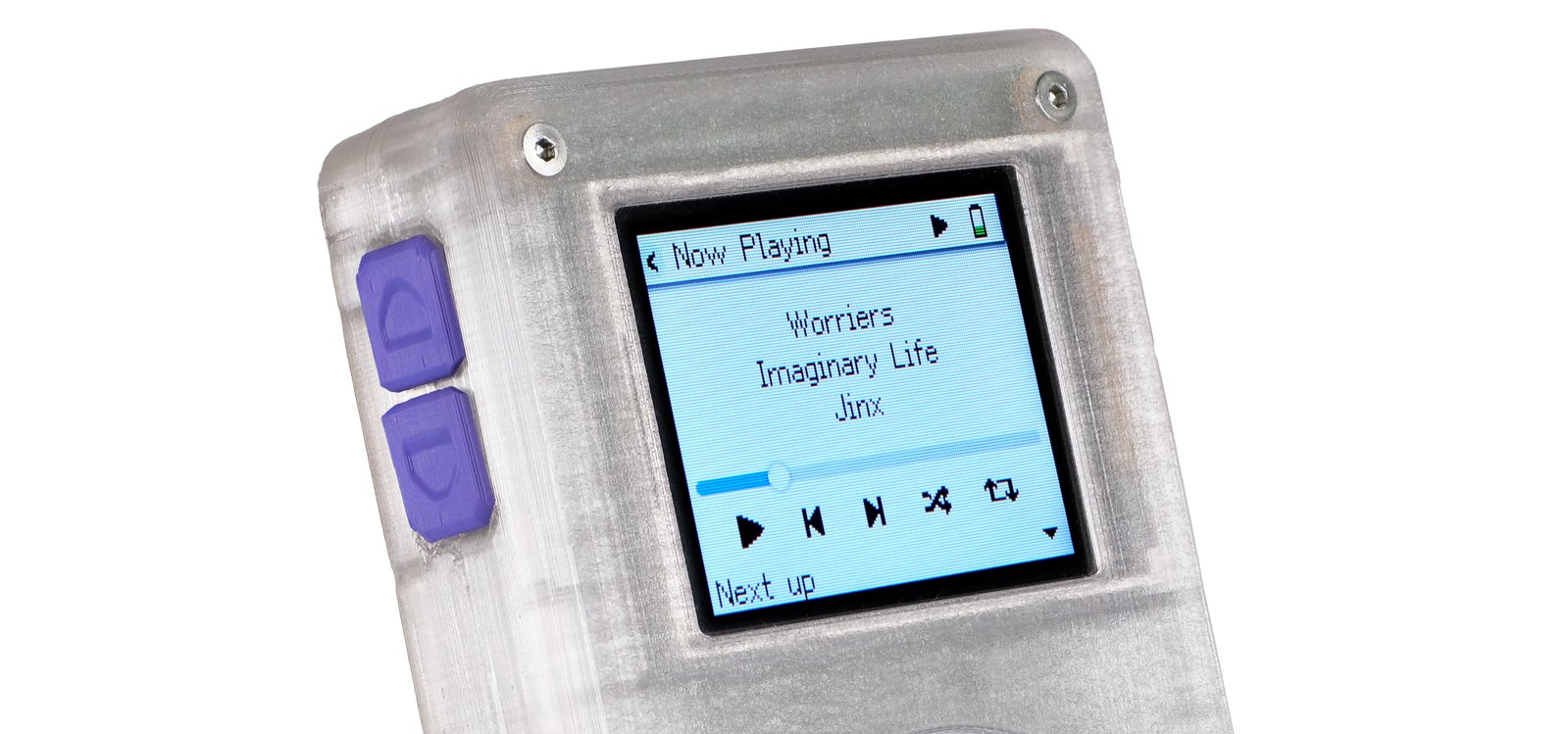
We think most people will find Tangara’s input methods reassuringly familiar when they interact with the device. It has a physical lock switch, two volume buttons, and a large (1.6" diameter) capacitive touchwheel. There’s also a small ERM haptic motor inside, which provides really pleasant, subtle feedback as you navigate.
Not a fan of touchwheels? Our firmware also supports use of the wheel as a directional pad with long-press shortcuts for faster navigation. You can even disable the capacitive sensors entirely and interact with Tangara using nothing but its side buttons.
More Than a Music Player
Tangara’s firmware is built up in layers, making it easy to dive into development at whatever level you’re comfortable with. In fact, while trying to make a fun little music player, we think we’ve accidentally come up with an extremely useful and compelling development board for all kinds of hardware hackers.
- At a high level, Tangara’s UI and playback controls are implemented using the Lua scripting language, a fantastic, easy-to-use language that may already be familiar to many of you. It’s simple and risk-free to hack up a custom theme or tweak the UI so it better accommodates the way you enjoy listening to music.
- For the more adventurous, Tangara’s ESP32 firmware is written in C++ using the ESP-IDF framework. This is where we interface directly with the hardware, as well as where we implement performance-critical code such as audio decoding. Developers familiar with C/C++ should find it straightforward to port all kinds of interesting new features, from additional audio codecs to Wi-Fi sniffers.
- Tangara also features a secondary microcontroller, a Microchip SAMD21, which handles power management and USB connectivity. For development purposes, we mostly use it as a USB-to-UART bridge for flashing the ESP32. We also have a basic Lua REPL exposed over this serial connection, making it easy to explore and experiment with the device’s APIs. Longer term, we’re working on adding USB file syncing for both audio tracks and Lua scripts. This structure, whilst more complex than a single microcontroller running a single monolithic firmware, creates a device that is very difficult to brick, even when you’re experimenting with buggy firmware.
- And all of these developer-oriented features are tucked away inside a great little portable enclosure with a built-in display, intuitive input methods, and a battery.
Designed to Help You Make It Yours
Many existing portable media players enjoy thriving communities built around maintaining them, improving their software, and refurbishing or upgrading older units. Tangara is designed very much with these sorts of communities in mind; we want you to buy one device that you’ll still be using, in some form or another, decades from now.
- This outlook is reflected in many of the design decisions that produced Tangara.
The Case
Tangara’s enclosure is a simple, two-part design. Four screws on each half secure the whole assembly, including the two internal PCBs and the standoffs that separate them.
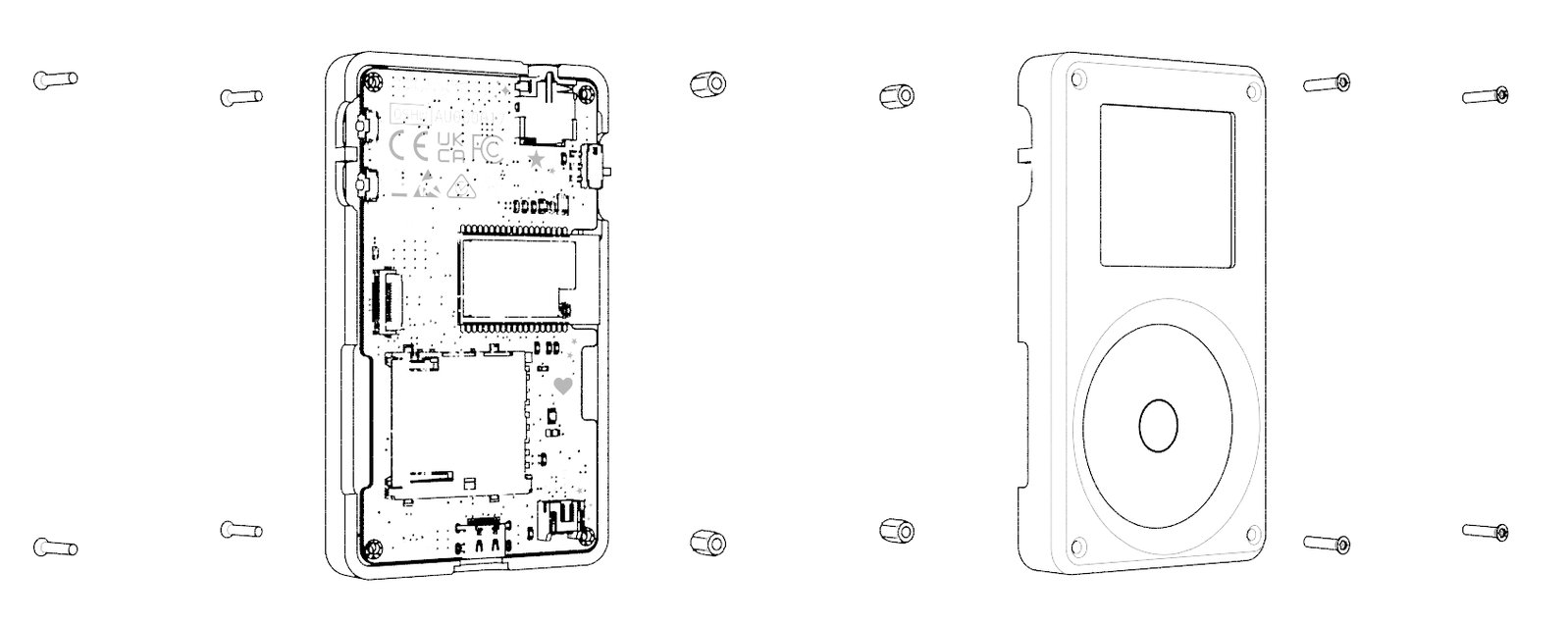
We’ve designed the case with both CNC manufacturing and at-home 3D printing in mind. The result is simple, easy to replace, and a great basis for customisation. All of the relevant design files are available as a FreeCAD project, and you can easily export them to other CAD or modeling tools.
The included case will be CNC milled, from transparent polycarbonate, then bead blasted. This not only looks extremely slick, it also provides a great starting point for anyone who might want to take a more physical approach to hacking on their music player. It takes stickers really well, too!
The Faceplate
Tangara’s display and touchwheel are located on a separate PCB, connected by a ribbon cable. This means that the display and input hardware can be swapped out independently of the main board, making it easy to modify, repair, and upgrade your device.
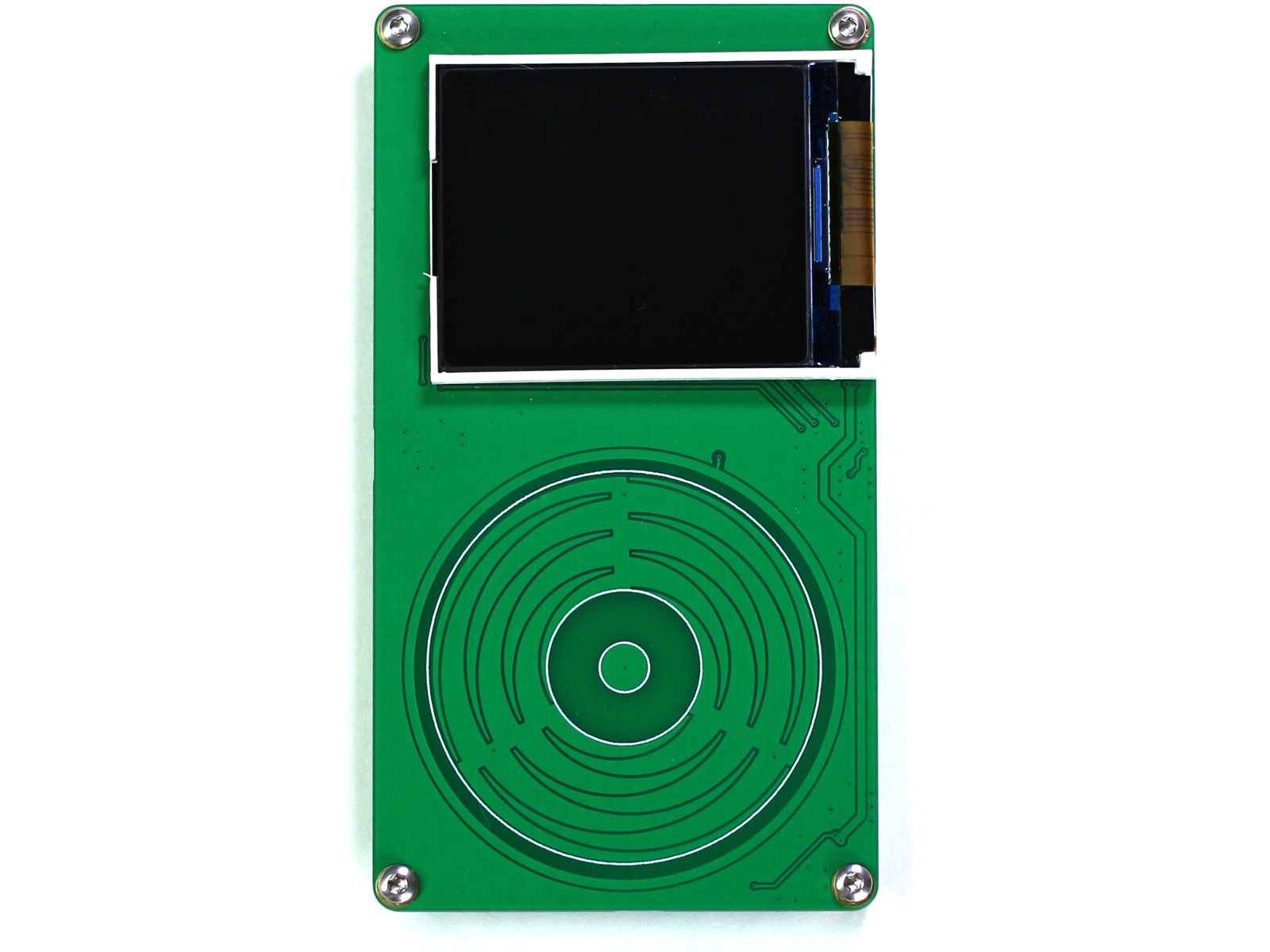
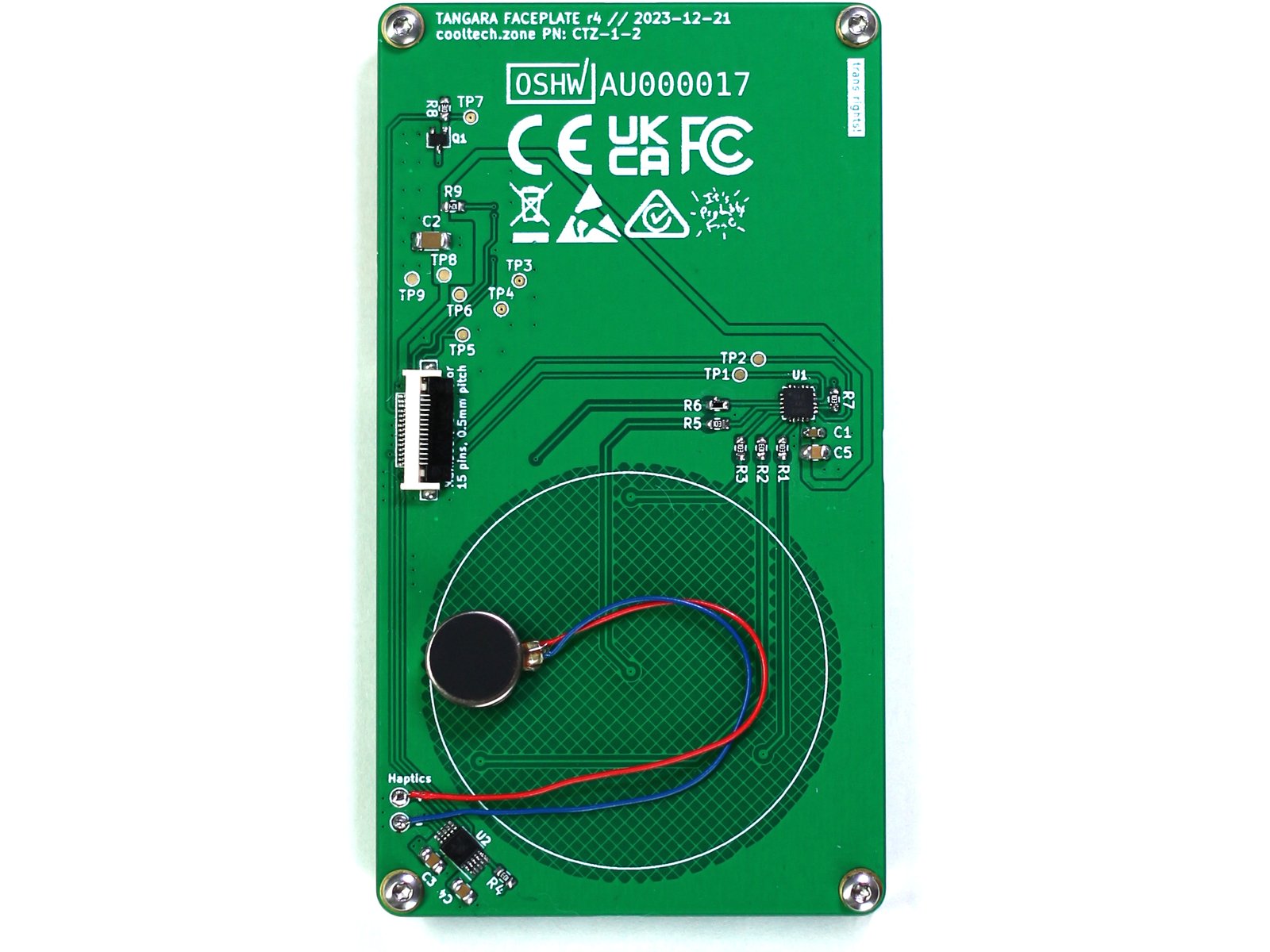
Battery & Storage
Tangara’s battery is a standard LiPo pouch cell with a 3-pin JST connector. This is a readily available form factor that makes replacing or upgrading your battery a breeze.
For storage, Tangara relies on a full-size SD card, which means you can easily add up to 2 TiB (!) of capacity to your device. And, assuming you don’t need quite that much room, you can find inexpensive SD cards just about anywhere in the world.
Firmware:
Our firmware is new and does not yet have the long tail of features provided by Rockbox and other players. However, it has a few key advantages that we think make Tangara’s firmware pretty exciting:
- It's written in C++17 using ESP-IDF, for easy toolchain setup and development.
- Its LevelDB-based database imposes no limit on the number of tracks you can store and supports fast, pre-calculated indexes of your library.
- Locale support allows your collection to be sorted correctly for your preferred language.
- Its Lua support has very complete bindings to system data and controls. (Our whole UI is written in Lua!)
Specifications:
- Main Microcontroller: ESP32-WROVER-E
- Xtensa dual-core LX6 processor, each core running at 240 MHz
- 520 KiB internal RAM, plus 8 MiB external SPI RAM
- 16 MiB Quad SPI flash
- Bluetooth v4.2, both Bluetooth Classic and BLE
- 802.11 b/g/n Wi-Fi, up to 150 Mbps
- Co-processor: SAMD21E18
- Arm Cortex-M0+ CPU running at 48 MHz, with 256 KiB flash and 32 KiB RAM
- Responsible for USB communication (including programming the ESP32), and system power management
- Connected to the system's I²C bus, and has SPI access to the SD Card
- Audio Chain: WM8523 DAC and an INA1620 amplifier
- Current firmware supports 16-bit audio at 44.1 kHz or 48 kHz, DAC supports up to 24 bits and 192 kHz
- 3.5 mm audio output, providing 200 mW at 250 ohms, ~150mW at 32 ohms
- THD+N <0.03%
- SNR of 106 dB (A-weighted)
- Firmware supports WAV, MP3, FLAC, Opus, and Vorbis codecs
- Bluetooth audio also supported (SBC codec only with more codecs possible via firmware updates)
- Power
- 2200-mAh battery with a standard, 3-pin JST connector
- USB Type-C charging, up to 1 A charge current
- Active battery life depends on use case (typically >20 hours)
- Standby battery life of years (standby current draw <50µA)
- Two hardware buttons, one lock switch, and a configurable, capacitive touchwheel
- An ERM haptic motor for physical feedback
- 1.8", 160x128, full-colour TFT display
- Uses a standard, SDXC card for storage. Available up to 2 TiB
- A pretty cool clear, frosted enclosure
Documentations:
Package Includes:
- Tangara with internal battery and enclosure. (SD card and USB Type-C cable sold separately.)
Tangara - The music player you wish you had in the early 2000s
- Brand: Crowd Supply
- Product Code: NR-CS-Tangara
- Reward Points: 315
- Availability: In Stock
-
रo 31,035.00
- Price in reward points: 31539
-
- 2 or more रo 29,745.00
- 4 or more रo 28,986.00
Related Products
Bluetooth UP Speaker
Bluetooth UP Speaker: We love technology, and we also love music. Therefore, we create Bluetooth..
रo 2,197.00

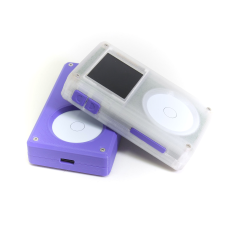
-74x74.png)
